Have a question relating to cricket and did not know who to ask? Now you can bounce your statistical queries off Rediff's resident expert.
Each week, Rajneesh Gupta will pick ten cricket-related questions readers send him and provide answers.
Your queries should be addressed to: Ask Rajneesh on Facebook
Rajneesh's answers some questions he received from readers last week:
Virender Sehwag scored at least one double century against Pakistan in three consecutive series [irrespective of home or abroad]: 2004 in Pakistan, 2005 in India, 2006 in Pakistan. Is he the first one to do so, or he share this record with someone else, that is, scoring at least one double century in three consecutive series against a particular country irrespective of home or abroad? -S.Srinivasan, Chennai.
My initial feeling was that Don Bradman must have done this against England. Bradman hit eight double centuries against England and three of them came in one series -- 254 at Lord's, 334 at Leeds and 232 at the Oval in 1930.
He could not score any double century in the 1932-33 series, but scored two in 1934 and two again in 1936-37. There was none in 1938, but he scored one in 1946-47.
Sri Lanka's Marwan Atapattu came very close. He made 223 in his very first innings against Zimbabwe at Kandy in 1997-98. Then, when Sri Lanka visited Zimbabwe in 1999-00, Atapattu once again scored a double century in the very first innings of the series - an unbeaten 216 at Harare. Atapattu, however, missed out in the 2001-02 series at home, where his highest in three innings was only 50.
When Sri Lanka visited Zimbabwe in 2003-04, Atapattu made scores of 170, 249 in two innings. So, in all, Atapattu scored three double centuries in four series against Zimbabwe.
England's Wally Hammond (4 v Australia), India's Sunil Gavaskar (3 v West Indies) and West Indies' Brian Lara (3 v Australia) are the other batsmen to score three double-centuries against a particular country, but none of them could score even two in consecutive series.
So, it turns out that Sehwag is, in fact, the only batsman in Test cricket to score a double century in three consecutive series against a particular opponent.
Kumble is India's best bowler in second innings
Image: Anil KumbleWho is the best Indian bowler in the second innings? Vijay Lokapally, New Delhi
I assume the query is about the performances of Indian bowlers in the opposition's second innings in Tests. Here is the answer to your query on three different parameters.
Leading Indian bowlers by wicket-aggregates
Anil Kumble............280 wickets @ 26.60
Harbhajan Singh...180 wickets @ 25.12
Kapil Dev................135 wickets @ 26.20
Bishan Bedi.............99 wickets @ 21.31
Zaheer Khan...........96 wickets @ 31.43
Leading Indian bowlers by average
(Min.50 wickets)
Bishan Bedi..............99 wickets @ 21.31
Vinoo Mankad..........56 wickets @ 22.57
Erapalli Prasanna....82 wickets @ 22.81
Harbhajan Singh...180 wickets @ 25.12
Kapil Dev................135 wickets @ 26.20
Leading Indian bowlers by strike-rate
(Min.50 wickets)
Zaheer Khan...........96 wickets @ 55.44
Harbhajan Singh...180 wickets @ 57.76
Anil Kumble............280 wickets @ 58.04
Kapil Dev................135 wickets @ 58.79
Erapalli Prasanna....82 wickets @ 61.63
Batsmen can be stumped off a wide ball
Image: Harbhajan Singh being stumped by Kamran AkmalIn a one-day match, Team A scores 200/10 in 50 overs and Team B reaches to 200/9 after 49.5 overs. Now the last batsman is out off the last delivery (stumped) and eventually it is a no-ball. Now what is the result of the match? -Arup Biswas, Kolkata
Law 24 and 39 stipulate that a batsman cannot be out stumped off a no-ball. So, in your scenario, Team B has gained a penalty run for the No-Ball and, at that point, it has won the match by one wicket.
Just to add to your query, a batsman can be out stumped off a Wide. So, what would have been the result had the batsman been stumped off a Wide in the example given by you.
Indians like scoring boundaries and sixes
Image: MS DhoniIndians like to score more in 4s and 6s ...since 1990 (or 2000); what percentage of runs have been scored in boundaries by the major countries in Tests and ODIs? Does India lead the two lists? - Ravi S.Khot
Good spot, Ravi! Indians really like scoring 4s and 6s. In Tests, India is third, behind Pakistan and Bangladesh, while they top the ODI list.
The accompanying tables give details of percentage of runs scored in boundaries by various teams since 2000 in two formats of the game.
Test cricket:
| Mts | Batsmen Runs | 4s | 6s | Boundary Runs | Boundary % | |
| Pakistan | 97 | 48592 | 6180 | 374 | 26964 | 55.49 |
| Bangladesh | 68 | 26370 | 3388 | 160 | 14512 | 55.03 |
| India | 121 | 64149 | 8177 | 382 | 35000 | 54.56 |
| West Indies | 119 | 54913 | 6881 | 395 | 29894 | 54.44 |
| New Zealand | 88 | 40922 | 5027 | 346 | 22184 | 54.21 |
| Zimbabwe | 44 | 19180 | 2336 | 125 | 10094 | 52.63 |
| South Africa | 120 | 62071 | 7593 | 361 | 32538 | 52.42 |
| England | 147 | 73676 | 9053 | 395 | 38582 | 52.37 |
| Australia | 128 | 72335 | 8635 | 553 | 37858 | 52.34 |
| Sri Lanka | 105 | 53042 | 6535 | 248 | 27628 | 52.09 |
ODIs:
| Mts | Batsmen Runs | 4s | 6s | Boundary Runs | Boundary % | |
| India | 353 | 75874 | 7462 | 1014 | 35932 | 47.36 |
| New Zealand | 274 | 52668 | 4643 | 906 | 24008 | 45.58 |
| West Indies | 269 | 52157 | 4621 | 872 | 23716 | 45.47 |
| South Africa | 282 | 60618 | 5560 | 771 | 26866 | 44.32 |
| Australia | 325 | 72927 | 6597 | 977 | 32250 | 44.22 |
| Pakistan | 306 | 65039 | 5821 | 910 | 28744 | 44.20 |
| England | 260 | 52512 | 4843 | 583 | 22870 | 43.55 |
| Bangladesh | 210 | 36570 | 3411 | 371 | 15870 | 43.40 |
| Sri Lanka | 316 | 63966 | 6003 | 543 | 27270 | 42.63 |
| Zimbabwe | 255 | 47318 | 3989 | 494 | 18920 | 39.98 |
McGrath holds the Test record of inflicting most ducks
Image: Glen McGrath and Shane WarneIf a batsman is run-out taking a third run, does he get credit for the first two runs? For example, at 99 he gets run-out taking the third run. Does he get his century? - Leyland defigueiredo
A batsman gets credit for all the runs he has completed before he got run-out. So, if a batsman batting on 99 plays a shot, sets off for the runs and is eventually run-out while taking the third run, his final score will be 101.
I have seen a numerical number on the T-shirt worn by Indian players in Test cricket. For example, Raina's shirt bears number 265. Can you brief me what does this signify? - Tarique Parvez
This number shows a player's position in chronological order among all players who have played Test cricket for India. So, 265 on Suresh Raina's shirt means he is the 265th player to represent India in Test cricket.
Five more players -- Chateshwar Pujara, Jaidev Unadkat, Virat Kohli, Praveen Kumar and Abhinav Mukund -- have since made their Test debut for India. So, any new player making his Test debut for India will wear a shirt with the number 271 on it.
Which bowler has got most batsmen out on zero in Tests and in ODIs, and which bowler has dismissed most batsmen who scored 100 or more? - Dillip Satapathy
Australia's Glenn McGrath holds the Test record of inflicting most ducks on batsmen - 104 of his victims could not open their account. Fellow-teammate Shane Warne and Sri Lanka's Muttiah Muralitharan are joint second with 102 duck-dismissals. Pakistan's Wasim Akram (79), West Indies' Courtney Walsh (79),India's Anil Kumble (77), Pakistan's Waqar Younis (76) and West Indies' Curtly Ambrose (76) come next.
In ODIs there is a five-way tie among India's Javagal Srinath, Sri Lanka's Muttiah Muralitharan, Pakistan's Saqlain Mushtaq, Sri Lanka's Chaminda Vaas and Bangladesh's Mashrafe Mortaza with 8 dismissals.
Batsman can be run-out in following ways
Image: Shivnarain Chanderpaul is run outThe batsman hits the ball and goes for a run. The other end batsman is trying to reach the batting end.
Scenario I: The keeper knocks the bails off before collecting the ball. Now how does the batsman get run-out?
Scenario II: The keeper falls on the three stumps and knocks them down before collecting the ball. Now how does the batsman get run-out? - Madhu Sudhan Reddy
Following are the ways in which a batsman can be run-out in conditions described by you.
Scenario I: The wicketkeeper may pull a stump out of the ground provided that the ball is in the hand or hands used. The wicketkeeper may knock a stump out of the ground with his arm provided that the ball is in the hand of the arm used.
The wicketkeeper may throw the ball with sufficient force to strike a stump completely out of the ground. When struck out of the ground the stump must be completely removed from the ground.
The wicketkeeper may replace one or both bails and then remove one of them in the aforementioned manner.
Scenario II:The wicketkeeper will have to replace a stump in one of the holes where the wicket originally stood and then pull / knock / strike it out of the ground as mentioned in scenario
Jack Crawford was the first cricketer to wear spectacles
Image: Clive LloydWho was the first cricketer to play Tests wearing spectacles? - P.B. Mohan
It is not easy to gather details of this nature. A thorough look into my notes revealed names of nearly 50 players who played Test cricket wearing spectacles, which include some famous names like Clive Lloyd, Zaheer Abbas, Anil Kumble, Narendra Hirwani, Devon Malcolm, Daniel Vettori etc. I may have missed a few.
It seems Jack Crawford -- who played 12 Tests for England between 1906 and 1908 - was the first cricketer to play in a Test match wearing spectacles.
Damien Fleming has been dismissed LBW most often
Image: Damien FlemingFor all Test players who have played 20 more Tests, who has the maximum LBW dismissals in percentage terms? -Srikantan Rajamani
Australia's Damien Fleming has been dismissed LBW most often under the criteria set by you, followed by West Indies' Colin Croft and Sri Lanka's Rangana Herath.
Here-under is the list of top-10 players with highest percentage of LBW dismissals:
| For | Mts | Complete inns | LBW | LBW% | |
| DW Fleming | Aus | 20 | 16 | 7 | 43.75 |
| CEH Croft | WI | 27 | 15 | 6 | 40.00 |
| HMRKB Herath | SL | 27 | 28 | 11 | 39.29 |
| JR Murray | WI | 33 | 41 | 16 | 39.02 |
| G Duckworth | Eng | 24 | 16 | 6 | 37.50 |
| Maninder Singh | Ind | 35 | 26 | 9 | 34.62 |
| SR Watson | Aus | 27 | 47 | 16 | 34.04 |
| RMH Binny | Ind | 27 | 36 | 12 | 33.33 |
| Misbah-ul-Haq | Pak | 25 | 37 | 12 | 32.43 |
| CD Collymore | WI | 30 | 25 | 8 | 32.00 |
Note: Australia's Joe Darling (34), Max Walker (34),Bill Ponsford (29), Neil Hawke (27), Bill O'Reilly (27) and Pakistan's Shahid Afridi (27) have played maximum Tests without being dismissed LBW even once.

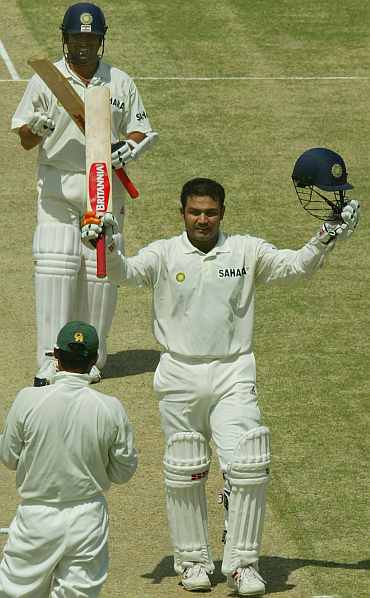
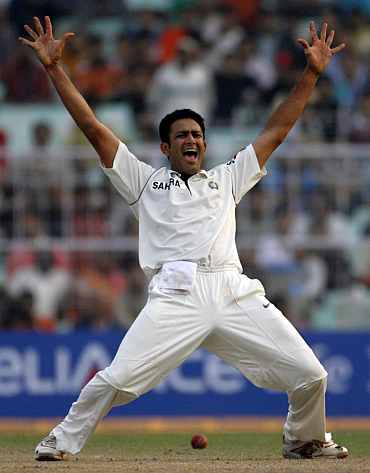
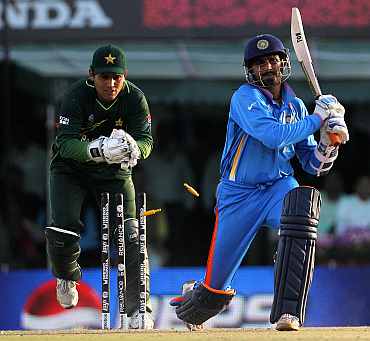
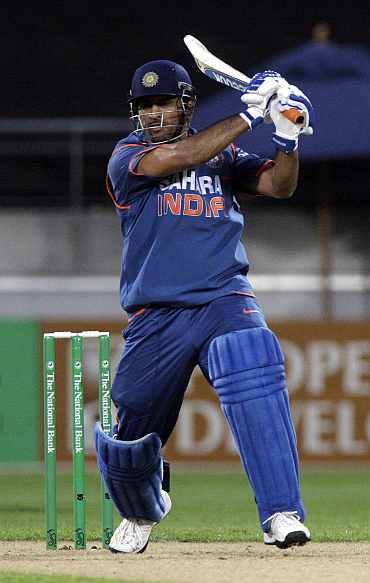
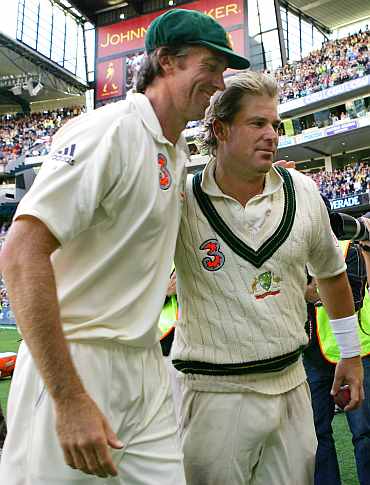
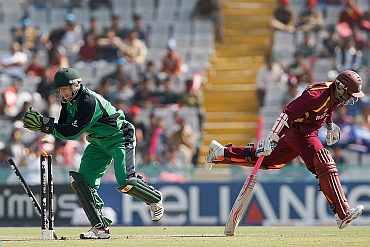
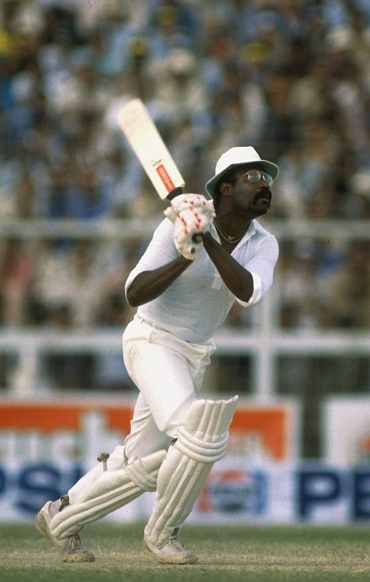
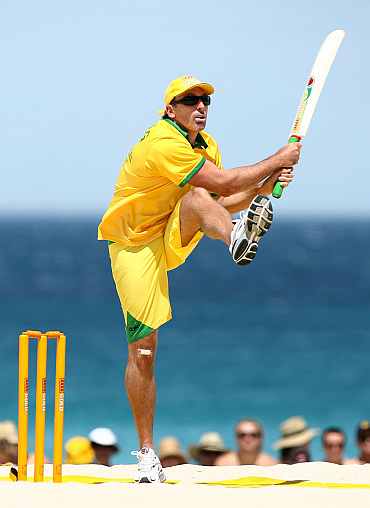
Comment
article